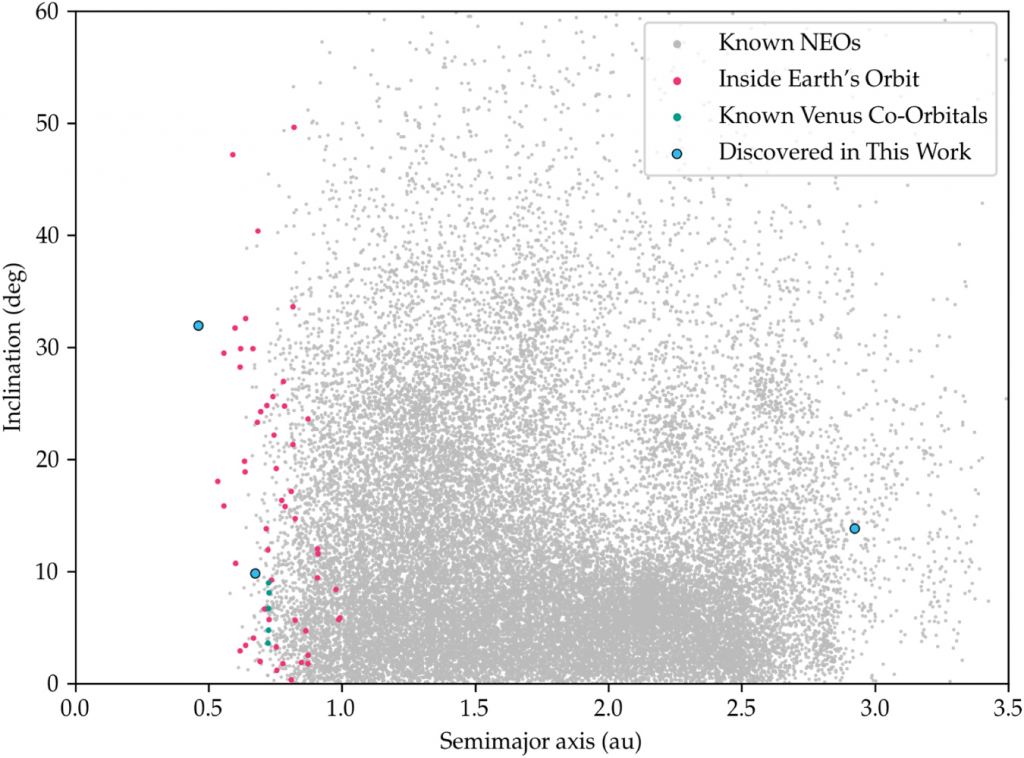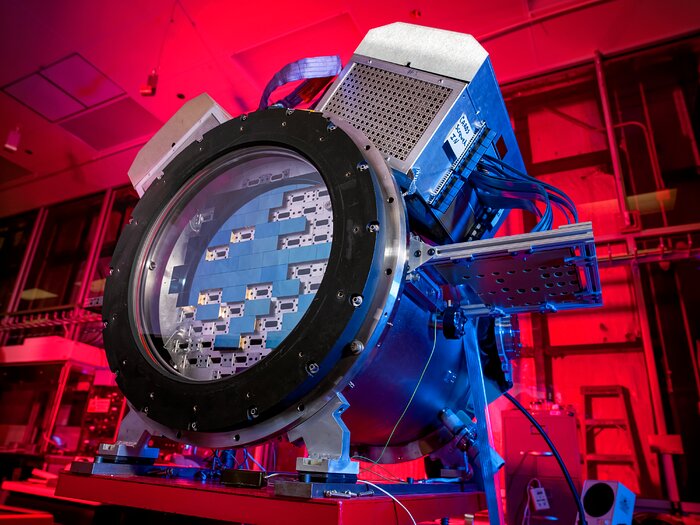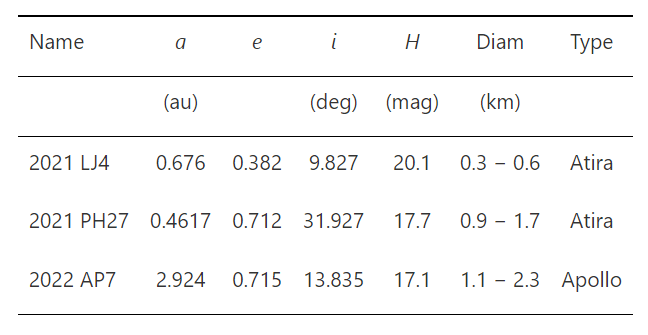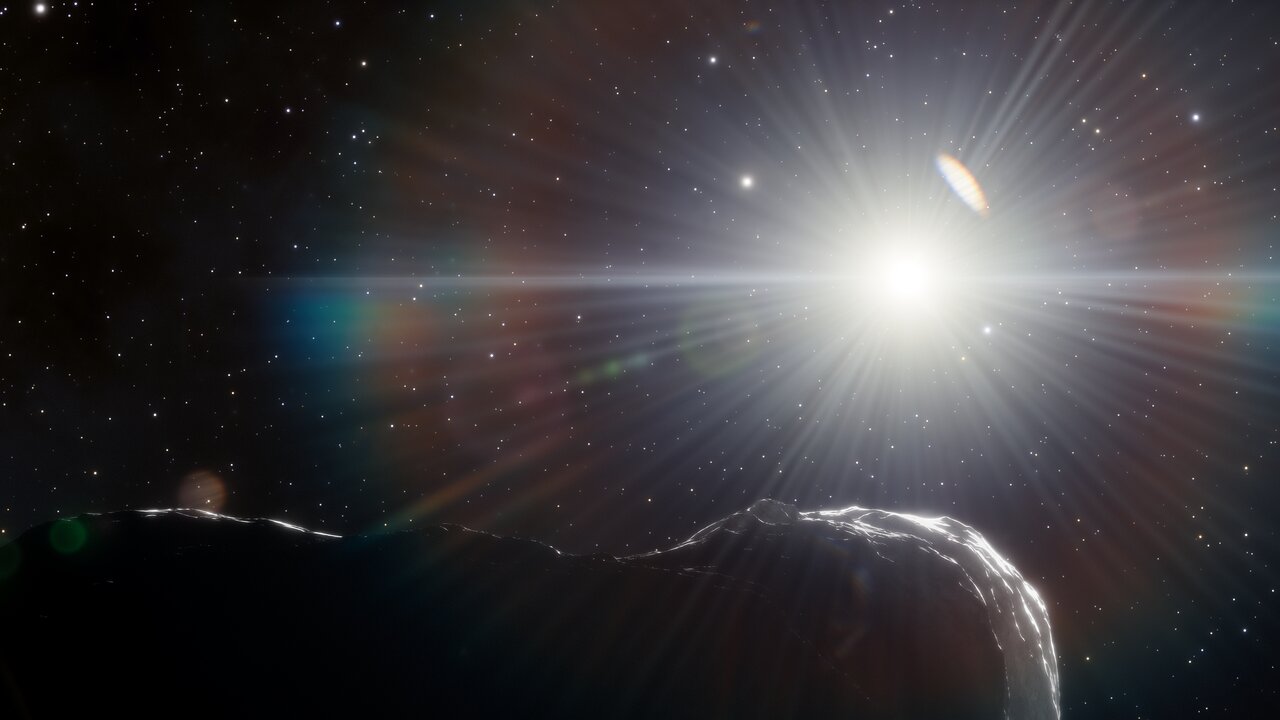An asteroid 1.5 km across is no joke. Even a much smaller one, about the size of a house, can explode with more power than the first nuclear weapons. When an asteroid is greater than 1 km in diameter, astronomers call them “planet-killers.” The impact energy released from a planet-killer striking Earth would be devastating, so knowing where these asteroids are and where they’re headed is critically important.
Our defensive capability against asteroid strikes is in its infancy, so advance notice of asteroids that could cross Earth’s orbit is critical. We’ll need time to prepare.
Imagine a time a couple of hundred years ago when the Solar System was largely mysterious to us compared to now. Earth has craters, so we know something slammed into it. But we didn’t know much more than that.
Earth’s most well-known impact crater is probably the Chicxulub crater, the physical evidence of the impact that led to the dinosaurs’ extinction. But it wasn’t easily visible.
Other craters are more visible, like the one in Arizona. It’s called the Barringer Crater, or, less imaginatively, Meteor Crater.
So we know that space rocks hit Earth. And we know they’ve also struck the Moon, Mercury, and Mars. We now know that no planets were safe from impacts in the Solar System’s long history.
Now we have an entire scientific enterprise aimed at finding and cataloguing the Solar System’s asteroid population. In 1994 the US Congress told NASA to get busy and find Near Earth Objects (NEOs) larger than 1 km in diameter. There are around 25,000 asteroids larger than 140 km in diameter near our planet’s orbit. The 140 km size was selected because one that big can destroy an entire city.
When the US Senate gave NASA its asteroid-finding mandate in 1994, the Senate wanted the agency to find 90% of the asteroids larger than 140 metres. But as of 2022, scientists think we’ve found only about 40% of them.
This study adds two more to the list and a third smaller one.
An international team of astronomers using the Dark Energy Camera at Cerro Tololo Inter-American Observatory in Chile have spotted three asteroids that lurk in the region interior to the orbits of Earth and Venus. They presented their findings in a paper in The Astronomical Journal. It’s “A Deep and Wide Twilight Survey for Asteroids Interior to Earth and Venus,” and the lead author is Scott Sheppard, an astronomer at the Earth and Planets Laboratory of the Carnegie Institution for Science.
The inner Solar System is a very challenging environment to search for asteroids. There are only two ten-minute windows each night when astronomers can search the region. The Sun’s glare creates a bright background glow that confounds observations. The Earth’s atmosphere adds another layer of difficulty by distorting and blurring observations.
“Our twilight survey is scouring the area within the orbits of Earth and Venus for asteroids,” said Sheppard. “So far, we have found two large near-Earth asteroids that are about 1 kilometre across, a size that we call planet killers.”

The asteroid of concern is the 1.5 km one named 2022 AP7. Its orbit intersects with Earth’s, so it’s a potential threat. The other two are named 2021 LJ4 and 2021 PH27, but their orbits are completely inside Earth’s orbit, so they pose no danger. The researchers behind this paper think there are more asteroids in this region, though scientists have only discovered about 25.
“There are likely only a few NEAs with similar sizes left to find, and these large undiscovered asteroids likely have orbits that keep them interior to the orbits of Earth and Venus most of the time,” said Sheppard. “Only about 25 asteroids with orbits completely within Earth’s orbit have been discovered to date because of the difficulty of observing near the glare of the Sun.”
Spotting tiny objects like these asteroids in the Sun’s glare, when there are only two 10-minute observation periods each evening, is beyond the capabilities of most telescopes. It takes a unique instrument to operate effectively in these conditions. The tool of choice was the Dark Energy Camera (DEC) at Cerro Tololo Inter-American Observatory in Chile.

The DEC wasn’t developed to hunt asteroids. Researchers created it to hunt for a different elusive target: Dark Energy, the mysterious force that drives the Universe’s expansion. DEC needs to observe hundreds of millions of galaxies to fulfill its mission. To do that, the DEC is both deep and wide: it can peer deep into the Universe while also capturing a wide field of view. That’s the only way it can record the galaxies’ motions and conditions in the Universe’s early age.
That ability to observe deep and wide simultaneously means the DEC is suited to finding asteroids near the Sun.
“Large areas of sky are required because the inner asteroids are rare, and deep images are needed because asteroids are faint, and you are fighting the bright twilight sky near the Sun as well as the distorting effect of Earth’s atmosphere,” said Sheppard. “DECam can cover large areas of sky to depths not achievable on smaller telescopes, allowing us to go deeper, cover more sky, and probe the inner Solar System in ways never done before.”
One way astronomers classify asteroids like 2022 AP 7 is with a measurement called Earth MOID, meaning Earth Minimum Orbit Intersection Distance. It’s a way to assess the collision potential between astronomical objects. In this case, the two objects are Earth and the asteroid. 2022 AP 7’s MOID is only 0.0475 au. That’s only about 4.4 million km or 2.7 million miles. Not much in astronomical terms.
With an MOID that small, 2022 AP 7 is definitely a Potentially Hazardous Asteroid (PHA.) Its MOID and its size mean it meets the definition. It’s likely the largest PHA found in about eight years.
This research is about more than just finding dangerous asteroids so that we can prepare to defend Earth from future impacts. It goes to the heart of understanding our Solar System. Since asteroids in the inner Solar System are so challenging to spot, our theoretical models of object populations are based on what’s easiest to see. This creates a bias in our models, and the DEC is helping to mitigate that bias.

The Dark Energy Camera was built to perform the Dark Energy Survey, which ended in 2019. Now astronomers are directing the camera’s power toward other things. As this study shows, that effort is producing meaningful results.
“Our DECam survey is one of the largest and most sensitive searches ever performed for objects within Earth’s orbit and near Venus’s orbit,” said Sheppard. “This is a unique chance to understand what types of objects are lurking in the inner Solar System.”
2022 AP 7 doesn’t pose a direct threat to Earth yet. As a Potentially Hazardous Asteroid, its orbit will cross Earth’s orbit sometime in the future. But we don’t know when.
More:
- Press Release: Largest Potentially Hazardous Asteroid Detected in Eight Years
- New Research: A Deep and Wide Twilight Survey for Asteroids Interior to Earth and Venus
- Universe Today: The Dark Energy Camera has Captured a Million Images, an Eighth of the Entire sky. Here are Some of its Best Pictures so far

